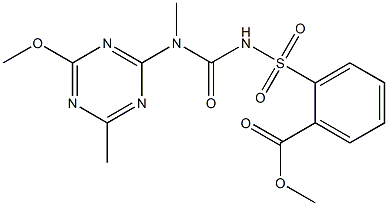A5397712
Methyl phenylacetate , 99% , 101-41-7
CAS NO.:101-41-7
Empirical Formula: C9H10O2
Molecular Weight: 150.17
MDL number: MFCD00008453
EINECS: 202-940-9
| Pack Size | Price | Stock | Quantity |
| 25G | RMB27.20 | In Stock |
|
| 100G | RMB36.00 | In Stock |
|
| 250G | RMB79.20 | In Stock |
|
| 500G | RMB119.20 | In Stock |
|
| 1KG | RMB199.20 | In Stock |
|
| 10kg | RMB1719.20 | In Stock |
|
| others | Enquire |
Update time: 2022-07-08
PRODUCT Properties
| Melting point: | 107-115 °C |
| Boiling point: | 218 °C (lit.) |
| Density | 1.066 g/mL at 20 °C (lit.) |
| vapor pressure | 16.9-75Pa at 20℃ |
| FEMA | 2733 | METHYL PHENYLACETATE |
| refractive index | n |
| Flash point: | 195 °F |
| storage temp. | Store below +30°C. |
| solubility | Chloroform (Slightly), Methanol (Slightly) |
| color | Colourless |
| Specific Gravity | 1.07 |
| Odor | at 10.00 % in dipropylene glycol. sweet floral honey spice waxy almond |
| Odor Type | honey |
| biological source | synthetic |
| Water Solubility | Miscible with water. |
| Merck | 14,7268 |
| JECFA Number | 1008 |
| BRN | 878795 |
| Stability: | Stable. Combustible. Incompatible with strong oxidizing agents, strong bases. |
| InChIKey | CRZQGDNQQAALAY-UHFFFAOYSA-N |
| LogP | 1.91-2.09 at 21.9-25℃ |
| CAS DataBase Reference | 101-41-7(CAS DataBase Reference) |
| NIST Chemistry Reference | Benzeneacetic acid, methyl ester(101-41-7) |
| EPA Substance Registry System | Methyl phenylacetate (101-41-7) |
Description and Uses
Methyl phenylacetate is utilized for partition coefficient measurement experiments. It is mainly used in the flavor industry and in perfumes to impart honey scents. Further, it acts as a precursor to prepare synthetic perfumes. It acts as an acylating agent and involved in the enantioselective acylation of beta-lactam intermediate using penicillin G amidase.
Safety
| Symbol(GHS) |   GHS07,GHS08 |
| Signal word | Warning |
| Hazard statements | H227-H303 |
| Precautionary statements | P210e-P280a-P370+P378a-P403+P235-P501a |
| Hazard Codes | Xn |
| Risk Statements | 21-R21 |
| Safety Statements | 23-24/25 |
| WGK Germany | 2 |
| RTECS | AJ3175000 |
| TSCA | Yes |
| HS Code | 29163500 |
| Hazardous Substances Data | 101-41-7(Hazardous Substances Data) |
| Toxicity | The acute oral LD50 in rats was reported as 2.55 g/kg (1.67-3.43 g/kg) and the acute dermal LD50 in rabbits as 2.4 g/kg (0.15-4.7 g/kg) (Moreno, 1974). |



